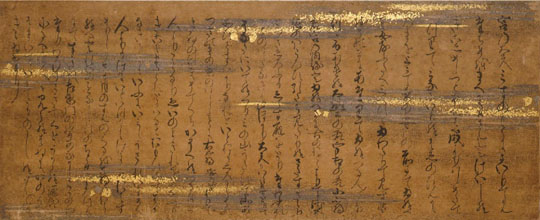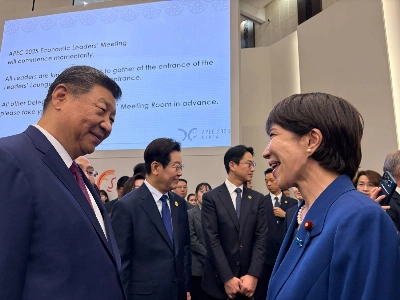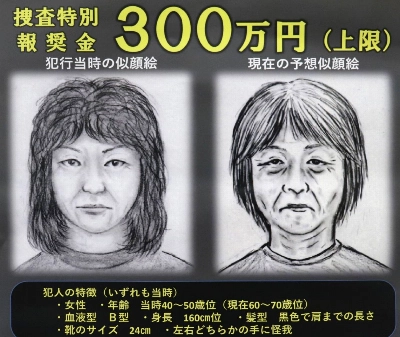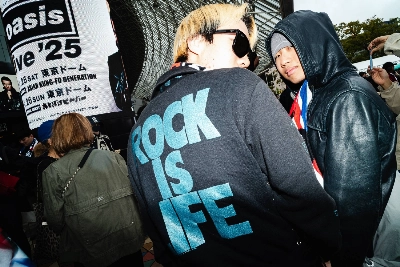Western readers were first exposed to the wonders of "The Tale of Genji" when Kencho Suematsu, a graduate of Cambridge University in England, published his translation of the first 17 of its 54 chapters in London in 1882, according to the renowned scholar of Japanese literature Donald Keene.
But what catapulted the novel to worldwide attention was the first full translation by Arthur Waley (1889-1966), a British scholar of Japanese arts who completed his task after years of arduous application in 1933.
After Waley, Edward Seidensticker (1921-2007), an American scholar of Japanese literature, published his famed translation in 1976, 25 years before the one by Royall Tyler, a former professor at the Australian National University in Canberra, who labored eight years over it.
Tyler, 71, said in a recent telephone interview that he first read the novel in Waley's translation when he was 18 and an undergraduate at Harvard University.
"I remember that I felt it was extremely rich somehow, and it seemed to me to describe kind of a complete world, a world you can walk into and explore," he recalled — generously adding that "because of the excellence of Waley's work," generations of English-language readers were able to enjoy "The Tale of Genji."
Although Waley left out one chapter, and some parts of his translation were not entirely accurate, Seidensticker corrected them, according to Tyler.
"I wanted very much to read 'Genji Monogatari' in the original," the Japanese-literature expert said. However, he admitted that when he tried to do so for pleasure, he found it so difficult that he couldn't do it. "So I realized that if I wanted to read 'Genji Monogatari' in the original and really understand it," Tyler confessed, "I would have to translate it."
Speaking to people who also love "The Tale of Genji," Tyler said he often found their impression to be very similar to his own, in that, "It's a complete world you just get absorbed into and you become involved with the thoughts, the feelings and the experiences of the characters and feel this world is very rich, very engaging and fascinating."
Among the novel's 54 chapters, the 34th and the 35th, "Wakana jo (Spring Shoots 1)" and "Wakana ge (Spring Shoots 2)," and Chapter 36, "Kashiwagi (The Oak Tree)" are the tale's highlights, Tyler said.
At the beginning of "Spring Shoots 1," Genji's career as a politician is peaking with his recent appointment to the lofty position of honorary retired emperor at age 39. Then his brother, retired Emperor Suzaku, asks him to marry his teenage daughter, Onna Sanno Miya (known as the Third Princess), though there are other younger candidates for the match.
Genji hesitates for many reasons, including the age gap. But finally he accepts her as the highest of his wives, which shocks Murasaki, his longtime favorite wife who had held the highest matrimonial rank before the Third Princess appeared on the scene.
At that point, however, as Genji already had many wives, why would he want another?
Many experts say it is because the Third Princess was young and a niece of Fujitsubo, whom Genji had adored since he was a child, but who was the consort of his father the emperor. Tyler, though, maintains that that was a secondary reason, and it was actually Genji's political ambition that led him to marry the Third Princess, because his beloved Murasaki — also a niece of Fujitsubo — was not socially elevated enough for him as her father, a prince, had never had anything to do with her.
"Genji must know that if he accepts Onna Sanno Miya, he is doing something very dangerous that could end in very big trouble — but she is the girl that everyone wants. So if he gets her, it will prove that, at the age of 40, he can still outdo every other man at court," he says.
And indeed, right after the marriage everything starts going badly.
First, Murasaki becomes ill due to the arrival of the Third Princess, and Genji looks after her day and night. But because he is away from the Third Princess, a young nobleman named Kashiwagi, a son of Genji's best friend, secretly sends love letters to her and steals into her room. As a result, she gets pregnant.
"All this happens because of the marriage, one thing gaspingly after another," Tyler says.
Though Genji at first believes the Third Princess is pregnant with his child, he finds a love letter from Kashiwagi to the princess and realizes they've been having an affair and the father of the unborn baby is Kashiwagi. This throws Genji into agonies of anger and grief even though he himself had made illicit love with Fujitsubo, his father's consort, when he was young. But unable to stop himself due to his injured pride, Genji torments Kashiwagi and causes him to die from stress.
"It is tragic and absolutely awful," Tyler says.
However, it is a tragedy so great that it invariably appeals to readers as they have become deeply involved with the characters' emotions.
Meanwhile, the unfaithful Third Princess is so distressed by Genji's icy coldness to her and her child, later called Kaoru, that she can bear it no longer and becomes a nun.
"Genji is a complete man who behaves like a very great, very gifted hero — but he is obviously not a nice guy," Tyler says. "He does what he needs to do in order to achieve what he wants. This is what men are actually like and he is of course absolutely fascinating to me. In Genji, I see a very interesting hero . . . and an absolutely extraordinary literary creation."


















With your current subscription plan you can comment on stories. However, before writing your first comment, please create a display name in the Profile section of your subscriber account page.